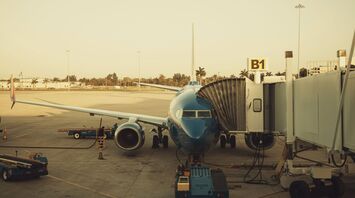Understanding Airplane Speeds Throughout Flight Phases

When you embark on a flight, whether it's for business or leisure, the speeds involved during various flight stages might pique your curiosity. Here's a comprehensive breakdown of how fast different types of aircraft travel through all stages of a flight—from the moment they move away from the gate to when they touch down at your destination.
Taxi and Takeoff: The Initial Thrust
The journey starts with the taxiing phase, where the aircraft navigates from the gate to the runway at about 18 to 22 miles per hour, ensuring safety and readiness for sudden stops. As the aircraft transitions to takeoff, speeds ramp up significantly. Depending on the aircraft size, takeoff speeds range from 149 to 177 miles per hour. This speed is crucial for achieving the lift necessary to become airborne, aided by various aerodynamic features like slats and flaps which enhance lift at lower speeds.
Cruising: The Heart of the Journey
Once airborne, the aircraft ascends and levels off into the cruising phase, which makes up the majority of the flight. Commercial jets like the Airbus A320 and Boeing 737 typically cruise at around 515 miles per hour, with some models like the Airbus A350 or Boeing 787 reaching speeds up to 559 miles per hour. The cruising altitude for these flights generally ranges between 31,000 and 38,000 feet, optimizing fuel efficiency and flight speed.
Descent and Landing: Preparing for Touchdown
The descent phase begins as the aircraft leaves cruising altitude, preparing for landing. This phase includes reducing altitude at a rate of 1,500 to 3,000 feet per minute. During final descent, the aircraft slows to a landing speed slightly higher than its takeoff speed, typically around 160 to 180 miles per hour, to ensure a smooth and safe touchdown on the runway.
This comprehensive look at aircraft speeds across different phases of flight not only satisfies curiosity but also highlights the engineering marvels that make modern air travel possible. Understanding these dynamics can enhance the travel experience, especially for regular business travelers who value efficiency and reliability in their flight schedules.



















